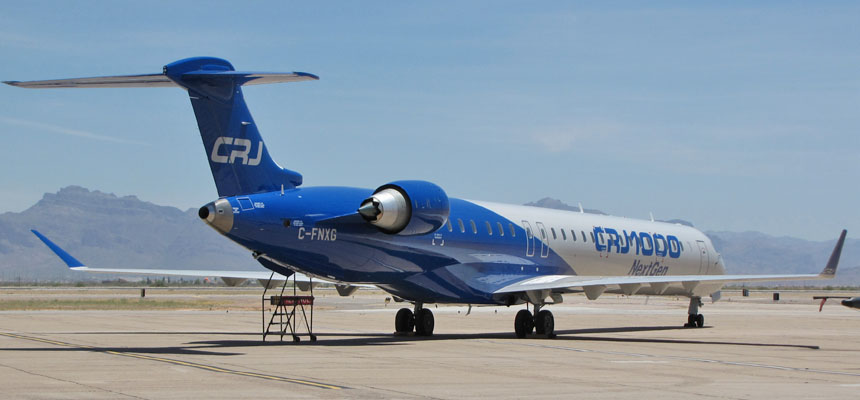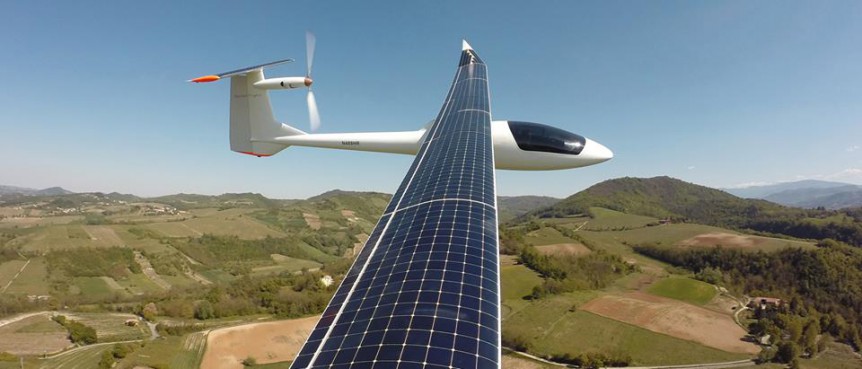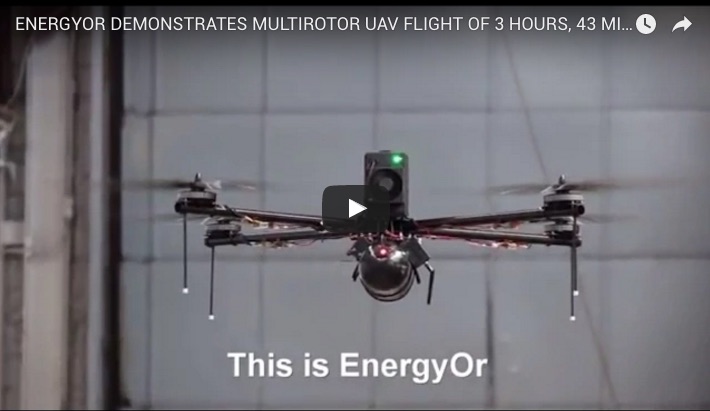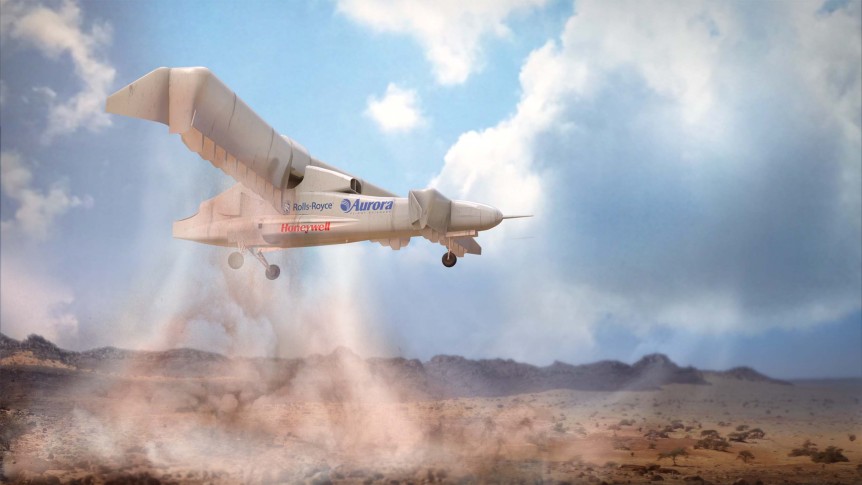Taja Boscarol of Pipistrel in Slovenia relays the information that NASA has tested Pipistrel’s electric propulsion system as part of its electric flight research for the X-57 program. It would seem reasonable to start by checking out Pipistrel’s well-tested motor package, one of the few that comes with fully-matched controller, batteries, and ancillary gear. NASA performed its tests on its 13.5-foot Airvolt stand at the Armstrong Flight Research Center at Edwards Air Force Base, California. Heavily instrumented, the Airvolt stand collects data through “high-fidelity sensors,” and transmits the collected information to a data acquisition unit that processes, records, and filters the measurements. NASA and Pipistrel should be able to make good use of this data. Normally installed on the Taurus Electro G2 motorglider, the Roman Susnik designed motor produces 40 kilowatts (53.6 hp.) at low rpm while producing high torque, an ideal combination for rapid climbs to soaring altitude. NASA will collect “torque and thrust measurements, high-fidelity voltage analysis, power …
Want to See a Big Tesla Fly?
Teslarati, the forum for Tesla fans, includes a fascinating concept for an electric/jet airliner, as proposed by Peter Egan, a web-site member from Artarmon, New South Wales, Australia. His proposal could be applied to smaller jet airliners in anything up to the Boeing 737 or Airbus A320 class. He uses a Bombardier CJR1000 100-passenger regional jet for his example, and shows a large motor pod-elevator replacement on each side of the fin, with counter-rotating propellers on either side of the rudder. (Whether this arrangement would be aerodynamically or structurally sound remains open to investigation.) His concept drawing includes the existing General Electric-CF34-8C5A1 turbofans for comparison, but they would be removed. The GE engines put out 13,630 pounds (60.6 kiloNewtons) of thrust at takeoff. Peter substitutes a pair of twin- motor/counter-rotating propeller units, each with: two permanent magnet electric motors, rated at 1,200 kW (1,608 hp.) continuous power, with 1,400 kW (1,876 hp.) each available for takeoff. That totals 5,600kW (7,506 …
Eric Raymond: Skyping from the Sky
Eric Raymond and his wife Irena fly their Sunseeker Duo from the Aeroporto Voghera Rivanazzano near their home in Voghera, Italy. The Provincia di Pavia provides wonderful architectural and scenic backdrops for their flights, something captured briefly in a video they filmed last year for Skype and Microsoft. To Eric’s surprise, the commercial was finally released this month. The Raymonds and their collaborators are part of a larger advertising campaign for Skype and Microsoft, with their high-tech offerings complementing the wireless communications tools and the ad’s graphics. Eric and Irena, John Lynch, and Jason Rohr perform well for the cameras, but Eric had an extra challenge in the aerial filming. “I was flying in formation with a Phantom drone!” Microsoft also featured the team in a tutorial showing how to set up Skype meetings. Eric explained that, “John Lynch is one of my CAD designers, and master machinist. He made my nose gear, and is a specialist for propeller molds. …
Siemens 260 kW Motor First Flight, and a Siemens at the 2016 SAS
Siemens Motors announced the first public flight of their SP260D motor in an Extra 330LE aerobatic aircraft – although the motor had made its maiden, but not so public, flight on June 24. Putting out 260 kilowatts (348.5 horsepower) in near silence according to Siemens, the motor will certainly be capable of putting the Extra through its paces. The motor weighs only 50 kilograms (110 pounds), and with its Siemens inverter adds little weight to the nose of the Extra. Pipistrel-designed battery packs grouped behind it push the power-pack weight toward the center of gravity, which should enhance handling qualities. As Electronics Weekly reports, “Support structures have been on a finite element analysis diet. The aluminum ‘end shield’, for example, which supports the motor end bearing and takes all the propeller forces, went from 10.5 (23.1 pounds) to 4.9kg 10.8 pounds) .” This presentation shows the process on page 12. A finite element analysis program, NX Nastran, removed bits that …
Pikes Peak 2016 – A Record-Setting Year
Electric vehicles did not win the Broadmoor Pikes Peak International Hill Climb outright this year, but their overall showing was an indicator of how much progress designers have made in the last five years. Everyone’s a Winner! In 2011, Chip Yates rode his UQM-powered motorcycle to a record 12:50.094 time. Part of the 12.42-mile course was dirt road then, adding to the thrills, but slowing overall times. “I felt bad for the fans that watched me through the dirt section. They saw an electric superbike going 1 mph around the hairpins in the dirt.” He added this declaration, “We got a 12:51 time, I’ll take it, it’s plenty good for a rookie, and it’s plenty good for a home-made bike made by three volunteers.” He removed the motor from the bike and powered a modified Long-Eze aircraft to set several world records. Astonishingly, all but five of this year’s 78 finishers (out of 97 starters) had better times than Chip’s …
Le Mans 2016: Hybrids Rule But the Human Spirit Prevails
After over 300 trips around the 13.629 kilometer (8.47 mile) circuit, Porsche edged out Toyota for the overall win in the last three minutes of the 24 Hours of Le Mans. A breakdown left the leading #5 TS050 hybrid stranded on the track with the Porsche #2 919 hybrid speeding past for the overall win. Toyota and Porsche had battled it out for the entire race, with Audi struggling with a blown turbocharger and broken suspension. That Audi’s technicians’ and mechanics could repair significant mechanical issues and have their cars complete the race within striking distance of a podium finish speaks volumes for their skills. As usual for several years, Toyota, Porsche and Audi ran hybrid cars in the LMP1 (Le Mans Prototype 1) category, which allows either hybrid or non-hybrid power. Hybrid cars have no limit on engine size and non-hybrids are limited to 5.5 liters (340 cubic inches. Because of the speeds they can attain, LMP1 vehicles must …
Bosch Builds e-Kart with Monster Torque
Robert Bosch GmbH has developed an “e-kart” producing 20 kilowatts from two motor-generators, and 300 Newton-meters (221 foot-pounds) of torque, a number Bosch refers to as “sporting.” It would be nice to know how much this cart weighs, but Autoweek relates, “The only thing Bosch isn’t saying for now is just how long the e-kart can run on that battery, assuming 10/10ths driving, and how much the battery and powertrain weigh.” Otherwise, we know the e-Kart goes from 0 to 100 kilometers per hour (62 mph) in under five seconds and can squeal its tires “with just a tap of the pedal.” A guesstimate of 400 pounds for the total vehicle and driver weight would probably not be too far off the mark, making the acceleration figures seem reasonable. A collaboration of Bosch, FIA Electric, the New Energy Commission, and the German Motorsport Association (DMSB), the e-Kart was presented as part of a Formula E display on May 21, 2016. …
NASA Rethinks X Planes
In your editor’s childhood and youth, X Planes were all premised on speed, Chuck Yeager breaking the sound barrier in 1947 in the Bell X-1 when your editor was five years old (do the math). Movies that filled screens in those days featured test pilots as steely-jawed, fearless protagonists beating back the awesome forces in the sky. Frequent news stories and breathlessly narrated newsreels, and later television news captured the imagination with items about going higher, faster, and farther. NASA is bringing back the X-plane, but emphasizing quiet, efficient, clean and practical goals. NASA’s own description of the programs shows a turn toward green aviation in our future. “Goals include showcasing how airliners can burn half the fuel and generate 75 percent less pollution during each flight as compared to now, while also being much quieter than today’s jets – perhaps even when flying supersonic.” We still feel the need for speed, but responsibly. While the X-1 was a product …
EnergyOr Ups the Ante for Endurance
Staying airborne for more than an hour or two might seem like a huge leap for battery-powered electric aircraft. Inspired designers like Eric Raymond have been able to use solar cells to extend their flights to near-perpetual states. A large craft like Solar Impulse 2 remains in flight for up to five successive days and nights only through careful energy management and flight planning. Researchers are looking at hydrogen fuel cells as an alternative to batteries, with the hopes of achieving greater endurance. One company, EnergyOr, has developed two still small fuel cells to power their rotary- and fixed-wing drones, setting several records in the process. With payloads and maximum takeoff weights that enable carrying a 4K camera or large hydrogen tanks for long range flights, EnergyOr’s aircraft have demonstrated their abilities. The small experimental fuel cell described in our last entry is good news for small-scale drones – until the researchers scale things up to suit larger applications. Their …
Aurora Flight Sciences Win DARPA Award for Advanced VTOL
Electric Aircraft Symposia attendees will be familiar with presentations by Dr. John S. Langford, Chairman and CEO of Aurora Flight Sciences, an aeronautical firm continuously redefining the leading edge of aerial technology. He has shared the firm’s achievements in autonomous flight, with the company’s Centaur, a twin-engine light twin going from takeoff to landing at a distant airport without the need for pilot intervention. With other research projects on solar power, high altitude reconnaissance, and future “double-bubble” wide-body airliners, Aurora apparently showed enough innovative capacity to win an award from the Defense Advanced Research Projects Agency (DARPA) for its newest X-Plane, an unpiloted vertical takeoff and landing speedster called Lightning Strike. This Phase 2 award takes from a preliminary design study to a Design, Development and Integration phase, which DARPA explains, “… addresses in innovative ways many longstanding technical obstacles, the biggest of which is that the design characteristics that enable good hovering capabilities are completely different from those that …





